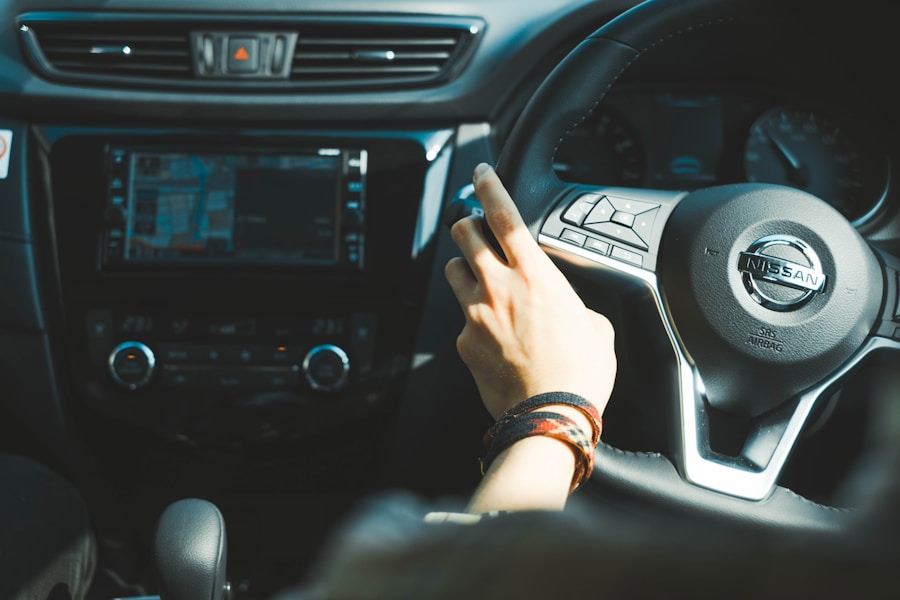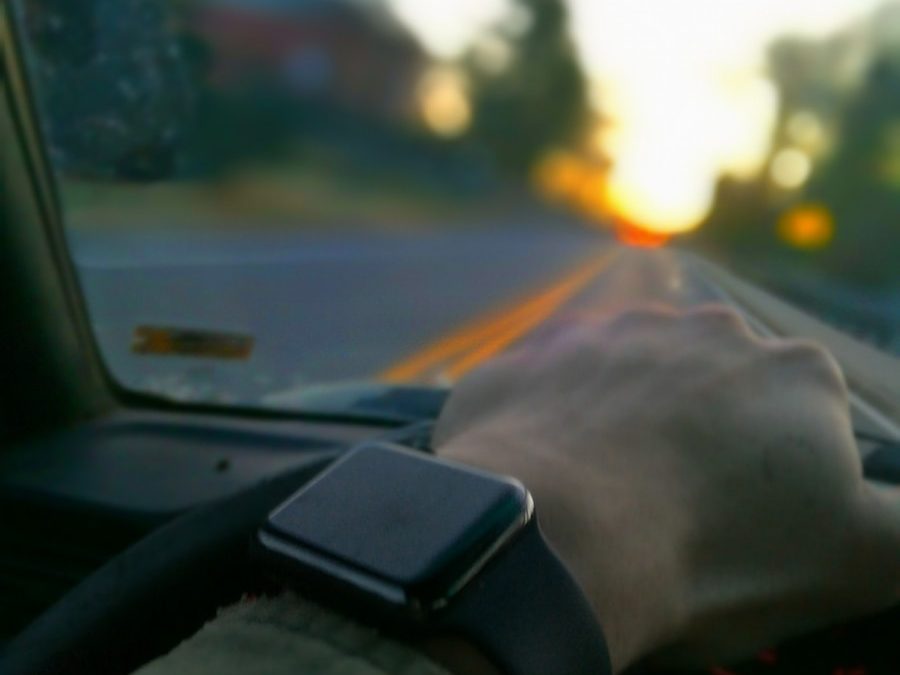In the modern era, hands-free devices have become ubiquitous, particularly in the context of driving. These technologies, which allow users to engage in phone calls, access navigation systems, and utilize various applications without physically handling their devices, are often marketed as solutions to the problem of distracted driving. The appeal of hands-free devices lies in their promise to enhance convenience and connectivity while ostensibly promoting safety on the road.
As smartphones have evolved, so too have the accessories and technologies designed to facilitate their use in a manner that minimizes distraction. Bluetooth headsets, voice-activated systems, and integrated car interfaces are just a few examples of how technology has adapted to meet the needs of drivers seeking to remain connected while on the move. However, the effectiveness of hands-free devices in mitigating distraction is a topic of ongoing debate.
While these devices are designed to keep a driver’s hands on the wheel and eyes on the road, they do not eliminate cognitive distractions. Engaging in conversation, even through a hands-free system, can divert attention from driving tasks. This paradox raises critical questions about the true safety benefits of hands-free technology.
As we delve deeper into the implications of hands-free device usage, it becomes essential to examine not only their intended benefits but also the potential risks they pose to road safety.
Key Takeaways
- Hands-free devices are designed to allow drivers to use their phones without taking their hands off the wheel, but they may still pose risks.
- Distracted driving is a major danger on the roads, and hands-free devices may not eliminate this risk entirely.
- Studies have shown that hands-free devices can still lead to accidents and contribute to distracted driving.
- Insurance claims may be affected by the use of hands-free devices while driving, and could impact coverage and premiums.
- Legal implications of hands-free device usage in accidents can vary by jurisdiction, and may impact liability and responsibility.
The Dangers of Distracted Driving
The Devastating Consequences of Distracted Driving
According to the National Highway Traffic Safety Administration (NHTSA), distracted driving claimed 3,142 lives in 2019 alone, highlighting the urgent need for effective solutions to this pervasive issue.
The Far-Reaching Impact of Distractions
The dangers associated with distracted driving are not limited to the driver; they extend to passengers, pedestrians, and other road users who may be affected by a driver’s inattention. The cognitive load imposed by distractions can significantly impair a driver’s ability to react to changing road conditions. For instance, a driver engaged in a phone conversation may fail to notice a stop sign or an approaching vehicle, leading to potentially catastrophic outcomes.
The Alarming Statistics Behind Distracted Driving
Research indicates that even brief distractions can have lasting effects on driving performance. A study conducted by the Virginia Tech Transportation Institute found that texting while driving increases the risk of a crash by 23 times compared to undistracted driving. This alarming statistic underscores the critical need for awareness and education regarding the dangers of distracted driving, particularly as hands-free devices become more prevalent.
Studies on the Impact of Hands-Free Devices on Accidents

Numerous studies have sought to evaluate the impact of hands-free devices on accident rates and overall road safety. One notable study published in the journal “Traffic Injury Prevention” examined the effects of using hands-free technology while driving. The researchers found that while hands-free devices do reduce physical distractions by allowing drivers to keep their hands on the wheel, they do not significantly decrease cognitive distractions.
In fact, drivers using hands-free devices were still found to exhibit slower reaction times and increased instances of missed traffic signals compared to those who were not engaged in any form of conversation. Another comprehensive analysis conducted by the Insurance Institute for Highway Safety (IIHS) revealed that states with laws prohibiting handheld phone use did not experience a corresponding decrease in accident rates. This finding suggests that simply transitioning to hands-free technology may not be sufficient to enhance road safety.
The study indicated that drivers often underestimate the cognitive demands of conversations conducted via hands-free devices, leading them to believe they are safer than they actually are. This misperception can result in continued risky behavior behind the wheel, ultimately contributing to accidents rather than preventing them.
Insurance Claims and Hands-Free Device Usage
| Year | Insurance Claims for Distracted Driving | Percentage of Claims Involving Hands-Free Device Usage |
|---|---|---|
| 2017 | 45,000 | 12% |
| 2018 | 48,000 | 15% |
| 2019 | 50,500 | 18% |
| 2020 | 52,700 | 20% |
The relationship between hands-free device usage and insurance claims is complex and multifaceted. As more drivers adopt hands-free technologies, insurance companies are increasingly tasked with evaluating how these devices influence accident claims and liability determinations. In many cases, insurance adjusters must consider whether a driver was using a hands-free device at the time of an accident and how that usage may have contributed to the incident.
This evaluation can be particularly challenging given that many drivers may not fully disclose their device usage during an accident investigation. Insurance companies have begun to adapt their policies and practices in response to the growing prevalence of hands-free devices. Some insurers offer discounts for drivers who utilize hands-free technology as part of their efforts to promote safer driving habits.
However, this approach raises ethical questions about whether incentivizing hands-free device usage truly leads to safer driving or merely encourages drivers to engage in conversations while believing they are less distracted. Furthermore, as legal precedents evolve regarding liability in distracted driving cases, insurance companies must navigate an increasingly complex landscape when determining fault and compensation for damages resulting from accidents involving hands-free device usage.
Legal Implications of Hands-Free Devices in Accidents
The legal implications surrounding hands-free device usage in accidents are significant and continue to evolve as technology advances.
However, these laws often differentiate between handheld and hands-free device usage, creating a legal gray area that can complicate liability determinations in accident cases.
For instance, while some states have strict prohibitions against handheld phone use, they may allow for hands-free operation under certain conditions. In legal proceedings following an accident involving a hands-free device, courts may consider factors such as whether the driver was engaged in a conversation at the time of the incident and whether that conversation contributed to their distraction. Additionally, evidence such as phone records or witness testimonies may be used to establish whether a driver was using a hands-free device during the accident.
Strategies for Safe and Responsible Hands-Free Device Usage

To maximize the safety benefits of hands-free devices while minimizing risks associated with distracted driving, it is essential for drivers to adopt responsible usage strategies. One effective approach is to establish clear boundaries regarding when and how hands-free devices will be used while driving. For example, drivers should consider limiting conversations to essential communications only and avoid engaging in complex discussions that require significant cognitive engagement.
By prioritizing safety over connectivity, drivers can reduce their risk of distraction. Another strategy involves utilizing technology features designed specifically for safe driving. Many smartphones now offer “Do Not Disturb” modes that can automatically silence notifications and calls while driving.
Additionally, some vehicles come equipped with advanced driver-assistance systems (ADAS) that can help manage navigation and communication tasks without requiring extensive driver input. By leveraging these tools effectively, drivers can create an environment that minimizes distractions and enhances focus on the road ahead.
The Role of Technology in Preventing Accidents
As technology continues to advance at a rapid pace, its role in preventing accidents becomes increasingly critical. Innovations such as collision avoidance systems, lane departure warnings, and adaptive cruise control are designed to enhance vehicle safety by reducing human error—the leading cause of traffic accidents. These technologies work in tandem with hands-free devices by providing additional layers of support for drivers who may be momentarily distracted.
Moreover, emerging technologies such as artificial intelligence (AI) and machine learning are being integrated into vehicle systems to analyze driver behavior and predict potential distractions before they lead to accidents. For instance, some vehicles are now equipped with systems that monitor driver attentiveness and provide alerts if signs of distraction are detected. By combining these advanced safety features with responsible hands-free device usage practices, drivers can significantly reduce their risk of accidents while benefiting from modern connectivity.
The Future of Hands-Free Devices and Road Safety
As we look toward the future of hands-free devices and their impact on road safety, it is clear that ongoing education and awareness will be paramount in addressing the challenges posed by distracted driving. While these technologies offer undeniable convenience and connectivity benefits, it is essential for drivers to remain vigilant about their potential risks. By fostering a culture of responsible device usage and embracing technological advancements aimed at enhancing safety, we can work toward reducing accidents caused by distraction.
The evolution of hands-free devices will likely continue alongside advancements in vehicle safety technology, creating new opportunities for improving road safety outcomes. As society grapples with the complexities of modern communication and transportation, it is crucial that we prioritize safety above all else—ensuring that our roads remain safe for everyone who uses them.
A related article to the topic of whether hands-free devices reduce accidents and insurance claims can be found on Fairshot Financial’s website. The article discusses the importance of filling out an auto insurance form accurately to ensure proper coverage in the event of an accident. To learn more about this topic, you can visit the article here.
FAQs
What are hands-free devices?
Hands-free devices are electronic gadgets or tools that allow users to operate them without the need to use their hands. This can include Bluetooth earpieces, voice-activated systems, and dashboard-mounted phone holders.
Do hands-free devices reduce accidents?
Studies have shown that hands-free devices do not necessarily reduce the risk of accidents. While they may free up the driver’s hands, the cognitive distraction of engaging in a conversation can still impair driving performance and increase the risk of accidents.
Do hands-free devices reduce insurance claims?
There is no conclusive evidence to suggest that hands-free devices reduce insurance claims. Insurance companies typically consider a variety of factors when determining premiums and claims, and the use of hands-free devices may not have a significant impact on these factors.


